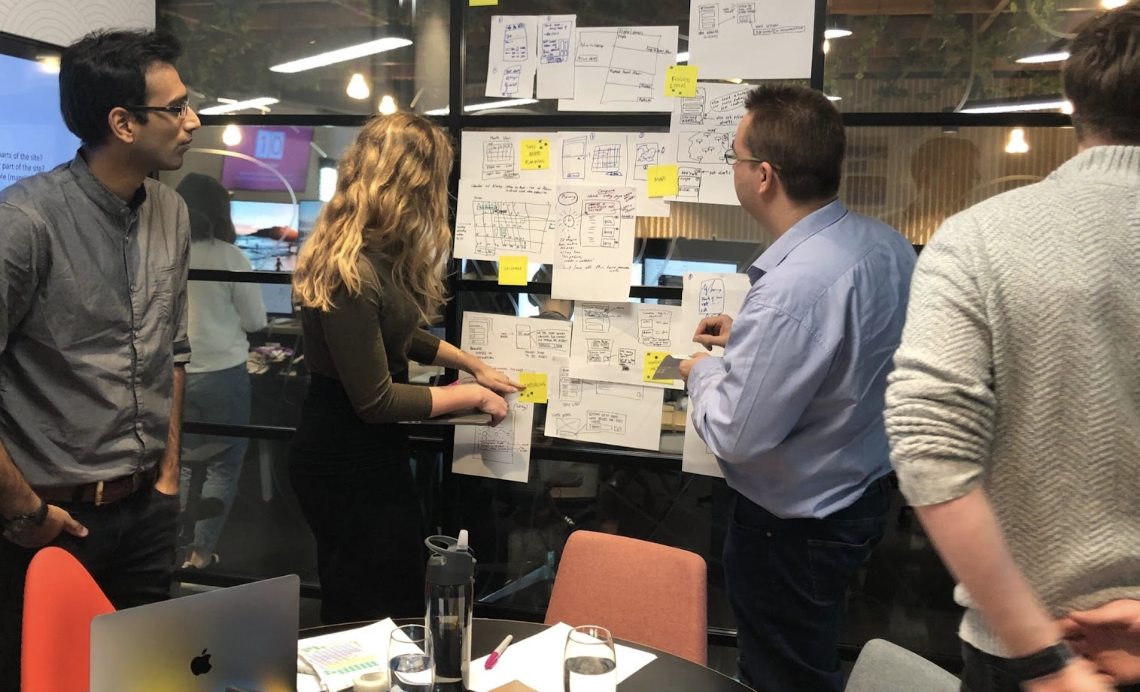SKYSCANNERDesign sprint facilitation
Role: Product analysis • Stakeholder workshop facilitation • User testing preparation
• User testing • Project planning
Location: London, UK
Industry: Travel
The Challenge
Skyscanner is known for being a search engine that helps people book travel options, with flights being the most used and well-known search option. Some people are not aware that Skyscanner also provide accommodation and car hire search options.
People looking for flights are able to utilise well-defined search features such as price alerts, which allow users to track prices, helping them to make better decisions on when to travel. The challenge was how to adapt the useful price alerts feature to benefit people looking for accommodation.
Method & Process
To solve the design challenge, I created a 5-day collaborative design sprint, engaging all stakeholders and a multidisciplinary team. My primary focus was to open up communication with the wider team to make sure that all possible solutions were considered from a design, marketing, technical and product perspective.
First, we began with a deep dive into competitor products to identify what the collective group did/didn’t want the accommodation price alert to be. We then focused on the end-to-end customer journey and tried to imagine what the relevant price alerts would be at each stage of the customer journey. I wanted the team to collaborate to generate ideas so that at the end of the sprint, I wanted to have a prototype that could validate these ideas with potential customers.






Prototype
Once the idea generation was complete the I collaborated with the product owner to understand which of the ideas were highest priority from a business perspective then weaved these ideas into a coherent customer experience. I then created storyboard, prototype and executed user testing making sure to gather the correct feedback against each idea so we could judge how the concepts were received by customers.
Overall feedback was positive, when asked 80% of participants said they would recommend using price alerts to friends. Participants thought the ability to create price alerts was useful and informative, this gave us an indication that we should proceed with the project.
Taking the learnings from the user tests I created 5 projects to be completed in Q1 & Q2 of 2020. Each project took concepts from the design sprint and aligned them to the business objective of converting audience to clicks by increasing logins, subscriptions and increased sessions.
Prototype: Design sprint ideas combined
Learnings
Collaborating with a large group of internal stakeholders can be tricky, but if everyone is dedicated and focused on achieving the same goal, it is possible to create a great customer-centred experience.
Personally, this project taught me about the benefits of collaboration with a wider team. Getting multiple disciplines involved allowed us to come up with more technically advanced solutions that were closely aligned to the business goals.
This was also beneficial when writing the project proposals for upcoming quarters, as getting sign off was easier to achieve since engineering, product and marketing leads were already involved and invested in ideas from the very concept stage.
